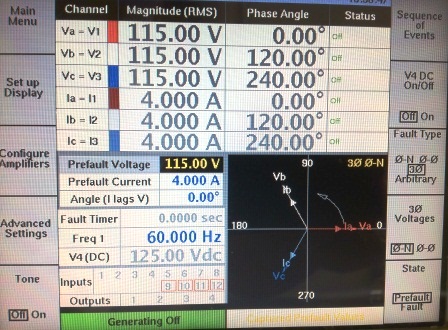|
For many years utility industry has been aware of the vast
benefits that can be derived from distribution automation
programs to improve reliability and reduce costs. Lack of
affordable technology was a barrier until the last decade with
limited technological choices that were available. Even then,
they usually came in at prices that were hard to justify.
However, the recent, more capable and flexible technology
coupled with falling price points have succeeded in reversing
that trend. A key among these are the wide choice of
communication products, especially wireless radios, that are
popular in many DA installations all over the world. Many
different DA programs such as Advanced Switching (improve
reliability), Conservation Voltage Reduction (reduce costs),
Distribution VAR management (improve efficiency) etc. can be
easily and quickly deployed through commercially available
technology.
APA routinely assists its clients in implementing a variety of
DA programs through following services:
- DA Programs Conceptual Design
- Business Case Analysis
- Technology Selection
- Detailed Design
- Implementation
- Testing
-
Training
The following is a brief synopsis of popular DA programs that
are gaining popularity with distribution utilities due their
benefits
Automated Switching
Automated switching can be used for two purposes in a
distribution network.
1) to automatically restore service to non-faulted sections
after a permanent fault has occurred,
2) dynamic reconfiguration of the distribution network to
prevent overloading thereby minimizing outage risks and
achieve load balancing.
Substantial benefits in terms of reliability improvements can
result from having remote control of switches on the
distribution circuits, especially if the switches can operate
automatically to reconfigure circuits and limit the extent of
outages.
Conservation Voltage Reduction (CVR)
Conservation Voltage Reduction or CVR is a low cost solution
available for distribution electric utilities to reduce energy
consumption and peak demand for short periods of time without
a noticeable impact in power quality or service interruption
to their customers. Typically, this is accomplished by
slightly reducing the distribution feeder voltage at the
substation, by the utility. For electricity consumers this
will result in slight reductions in energy consumption thereby
reducing their costs without any effort or need on their part
to understand or modify their usage habits. Some utilities are
using CVR to reduce their wholesale coincident peak demand
costs, thereby accomplishing significant demand penalty cost
savings. CVR also has the effect of reducing the distribution
line losses for the utility while the CVR is in effect.
VAR Management
Modern distribution utilities are under constant pressure to
reduce operating costs, improve system efficiencies and also
improve power quality to their members. Consequently, VAR
management on the distribution feeders to minimize the losses
is a hot topic for many utilities. Adding capacitor banks to
supply leading VARs is the most effective way to offset the
lagging VARs from the loads. Many utilities install fixed
capacitor banks in substations but this can only partially
alleviate the problem. Further, the fixed capacitors are not
capable of dynamically adjusting to the variations in the
lagging VARs which results in sub optimal compensation of
feeders most of the time. A more effective approach is to add
switched capacitor banks, in addition to fixed capacitor
banks, at a point closest to the reactive loads. This can be
accomplished in various ways, however the pole top switchable
capacitor tend to be preferred solution for many utilities.
Through automation of these switched capacitor banks dynamic
leading VARs can be dispatched in real time to match the
varying load VARs to achieve maximum savings on energy loss on
the distribution feeders.
Power Quality Management and Control
Modern day digital economy companies such as communication
network carriers, internet service providers, data warehouses,
banks, internet commerce establishments, and medical
facilities heavily rely on high quality power. Power quality
problems such as power surges, spikes, sags, line noise,
frequency variations, switching transients or brownouts can
have devastating effects on such companies often resulting in
heavy direct and indirect monetary losses. Many studies have
inferred that costs vary significantly based on the demand
characteristics of the end-user. The process of effective
remedy often starts with measurement and identification of the
source of such power quality issues. While special devices can
be installed to capture and store power quality events it may
be possible to extract some or all of that information from
digital intelligent electronic devices such as relays and
controls found in modern substations and distribution
automation controls. APA can help utilities to take advantage
of such data to identify and improve the power quality with
minimal capital expenditures.
|




